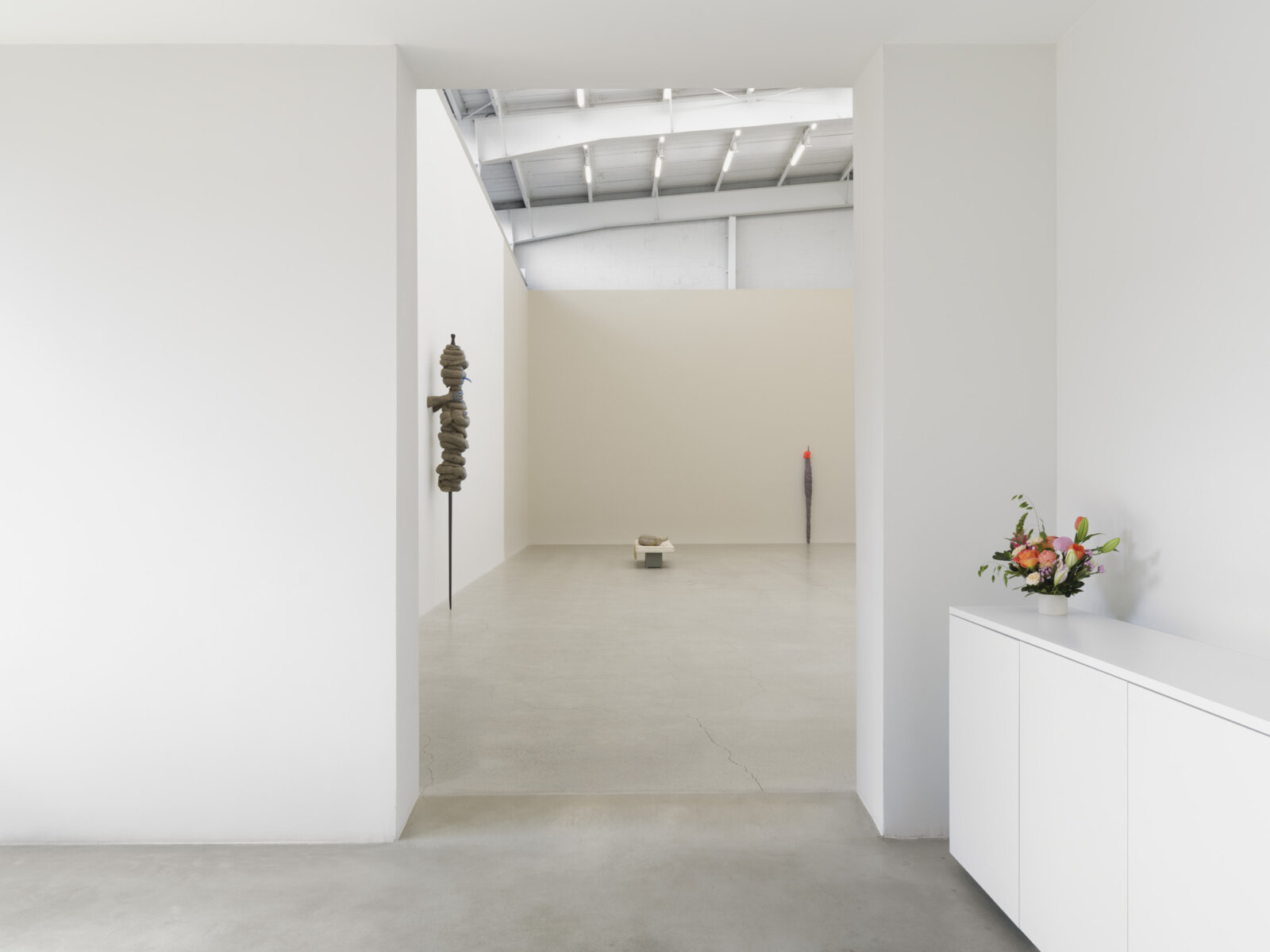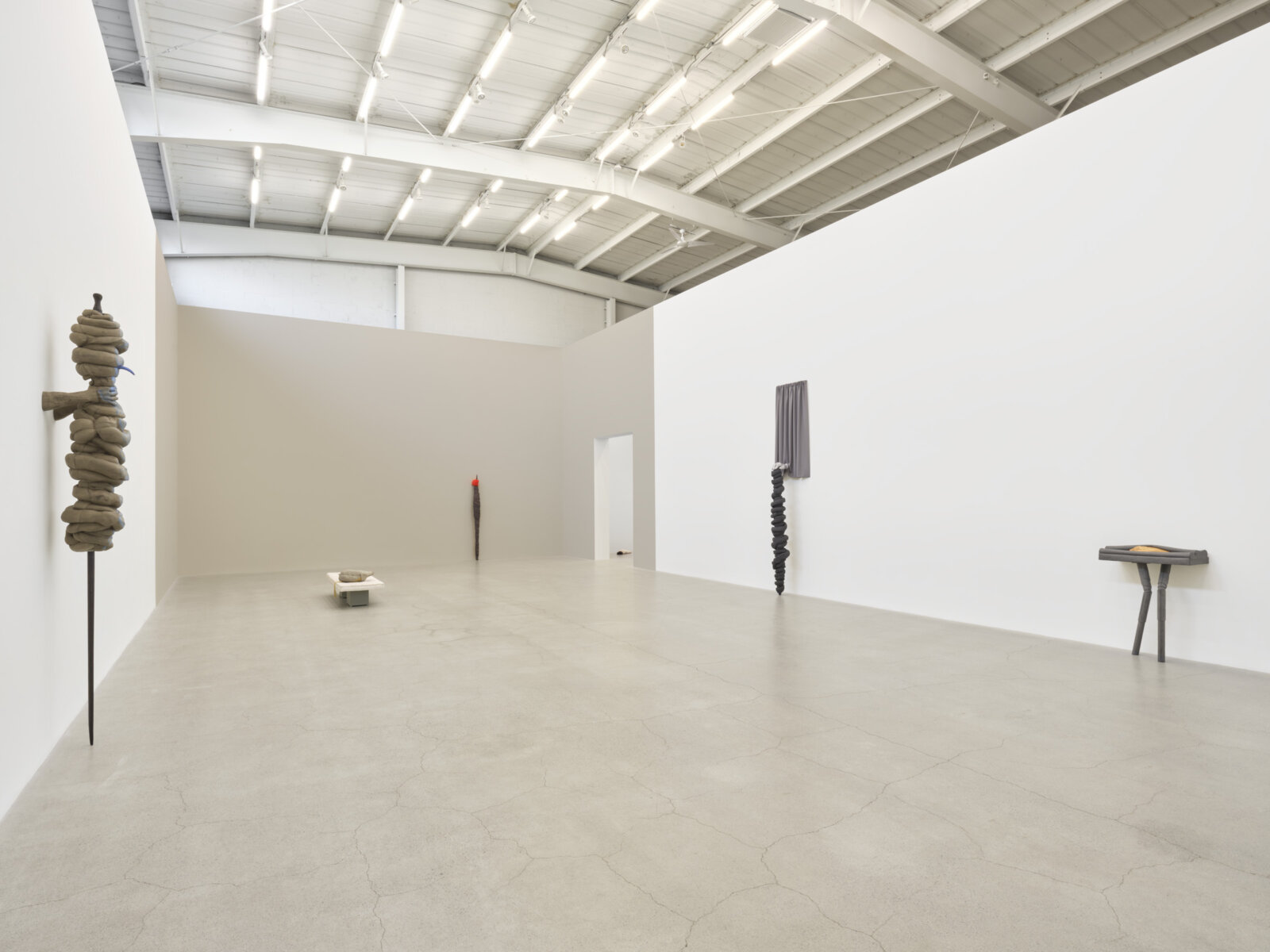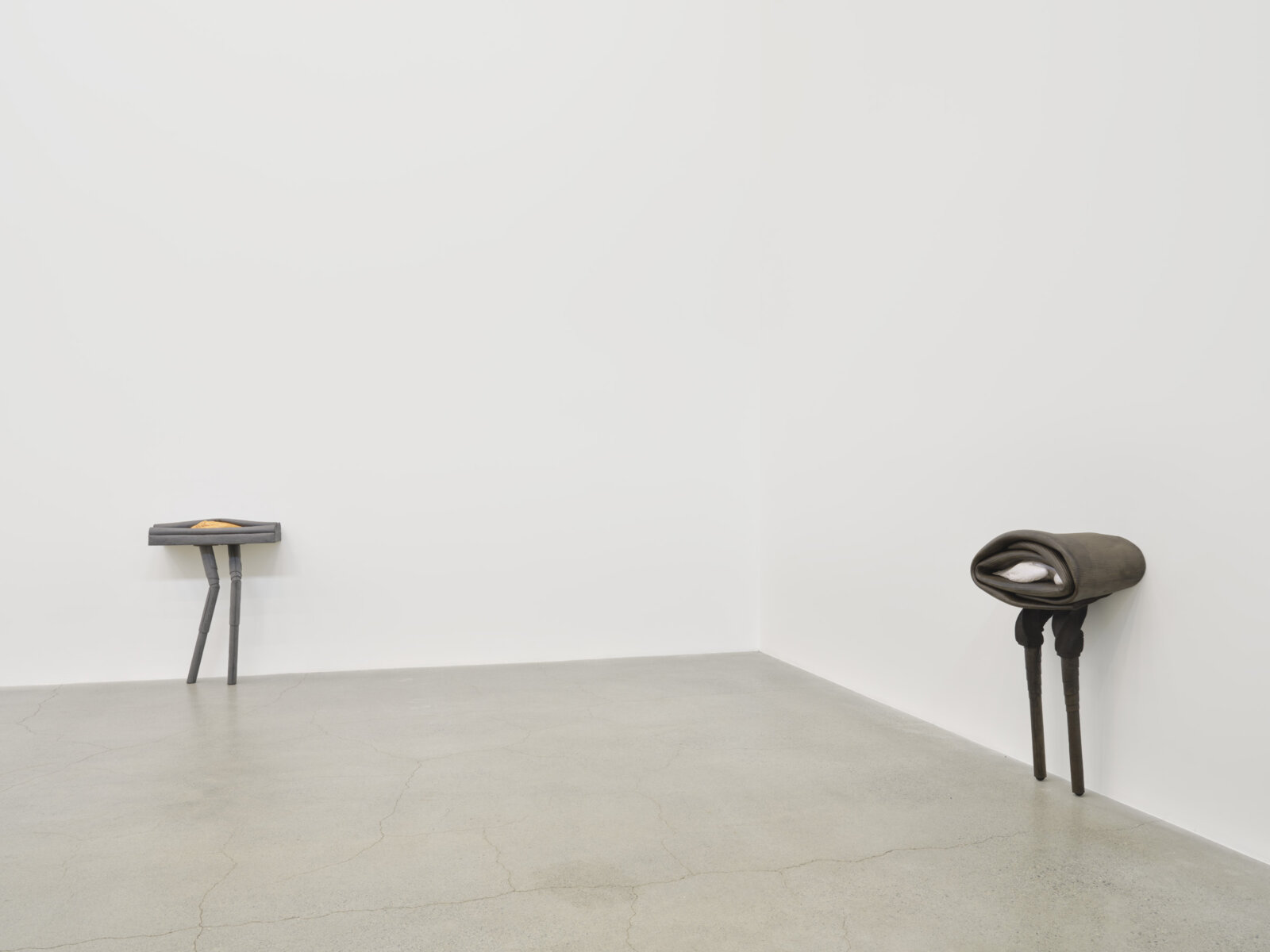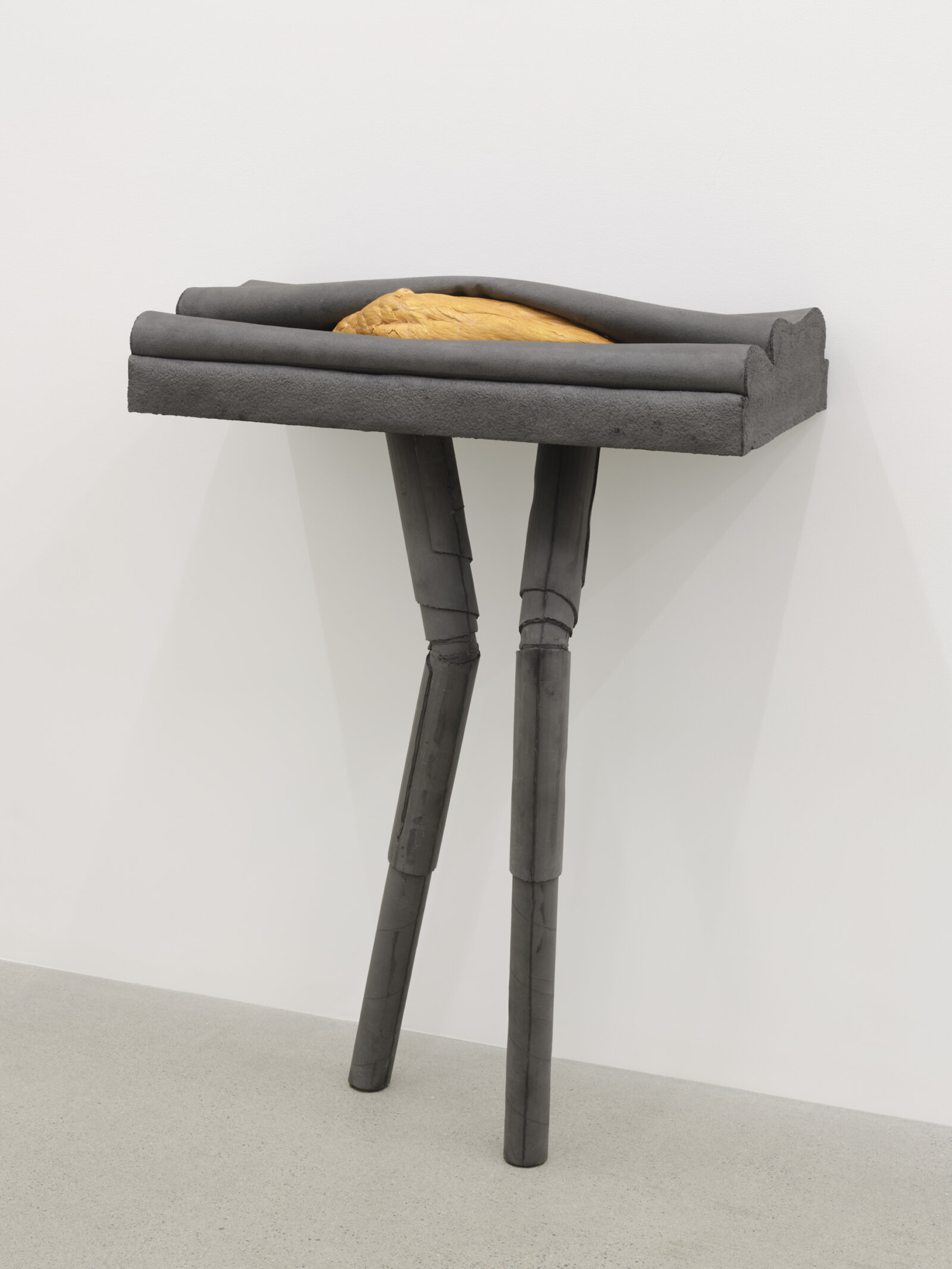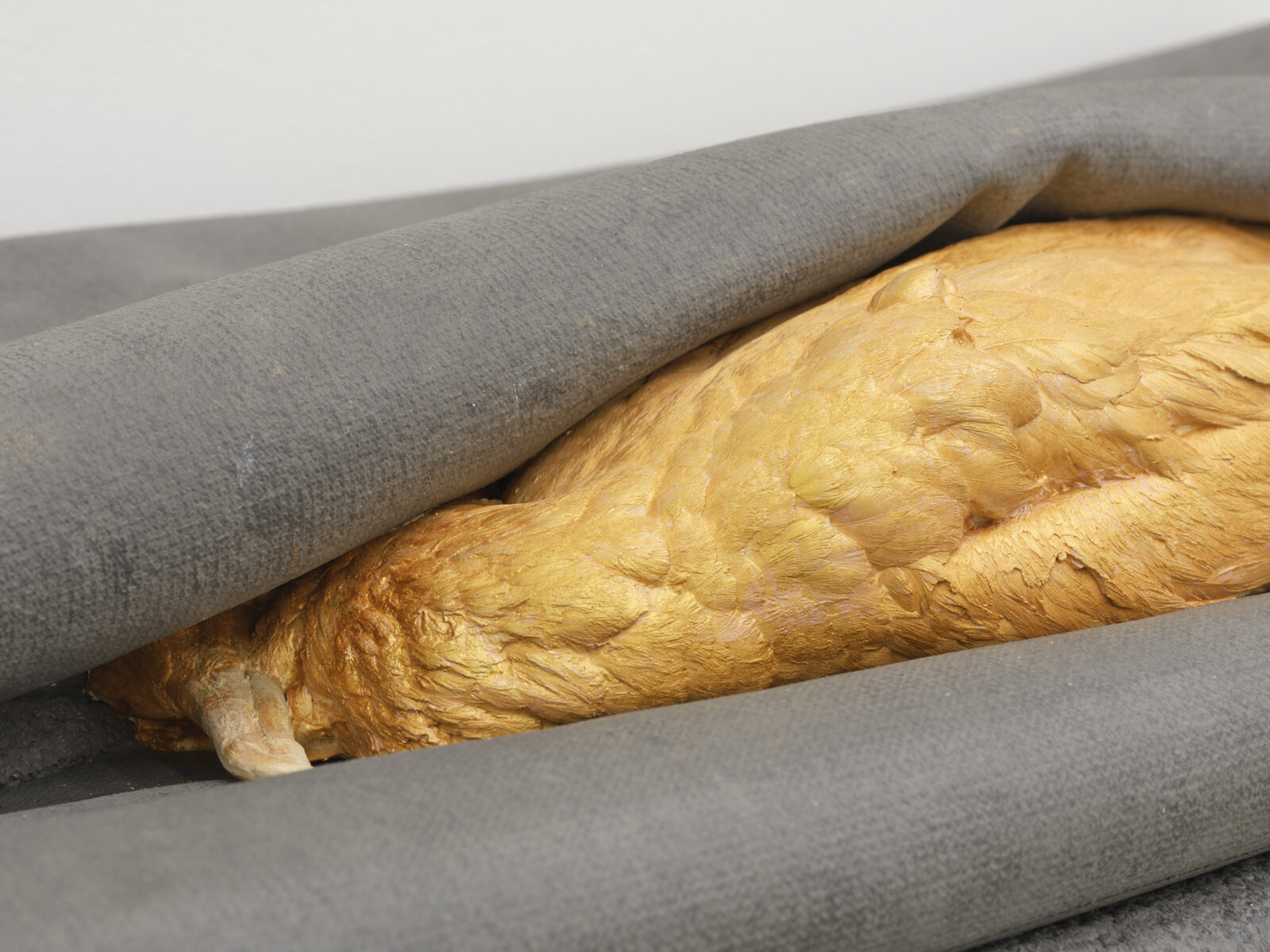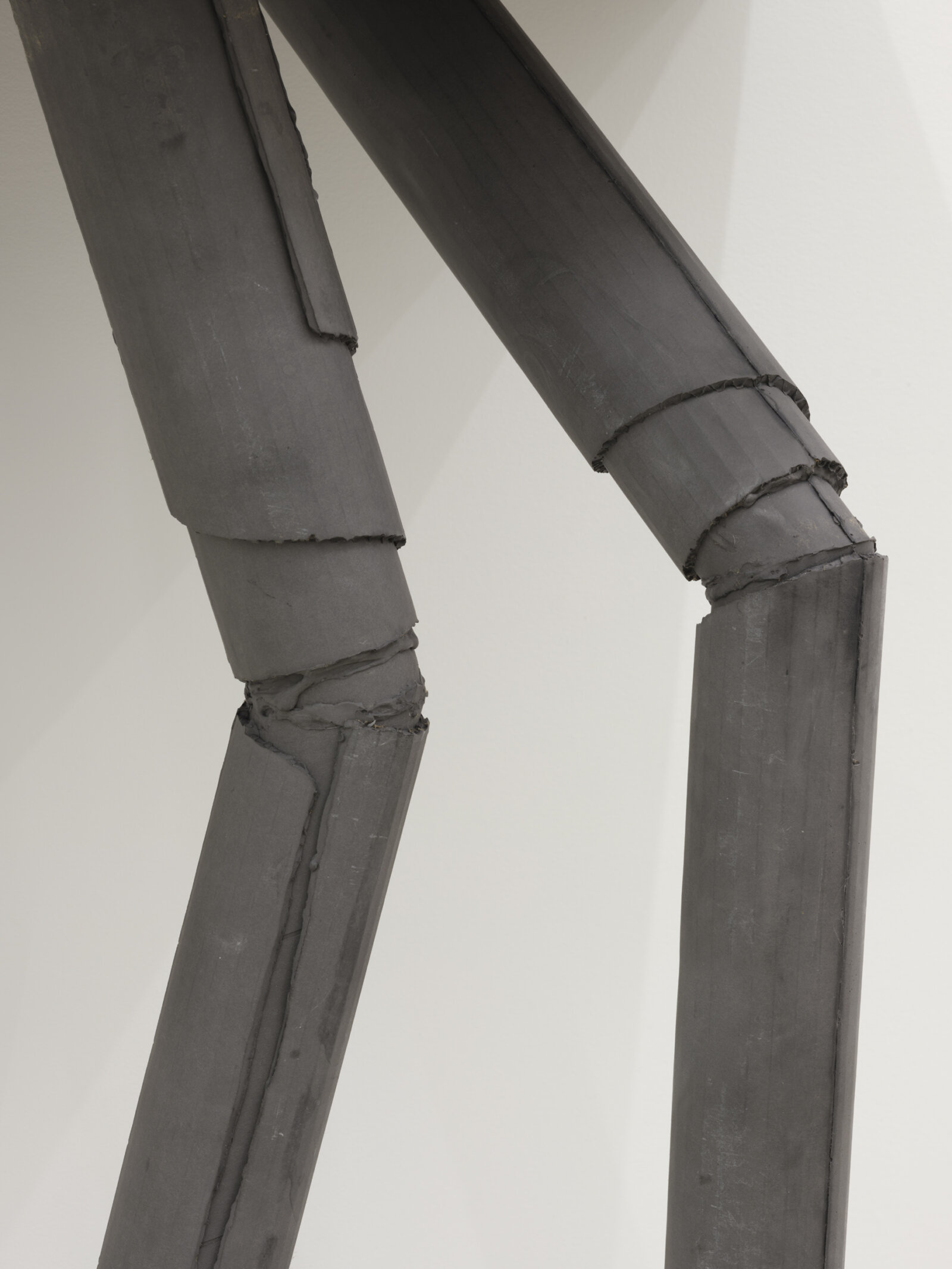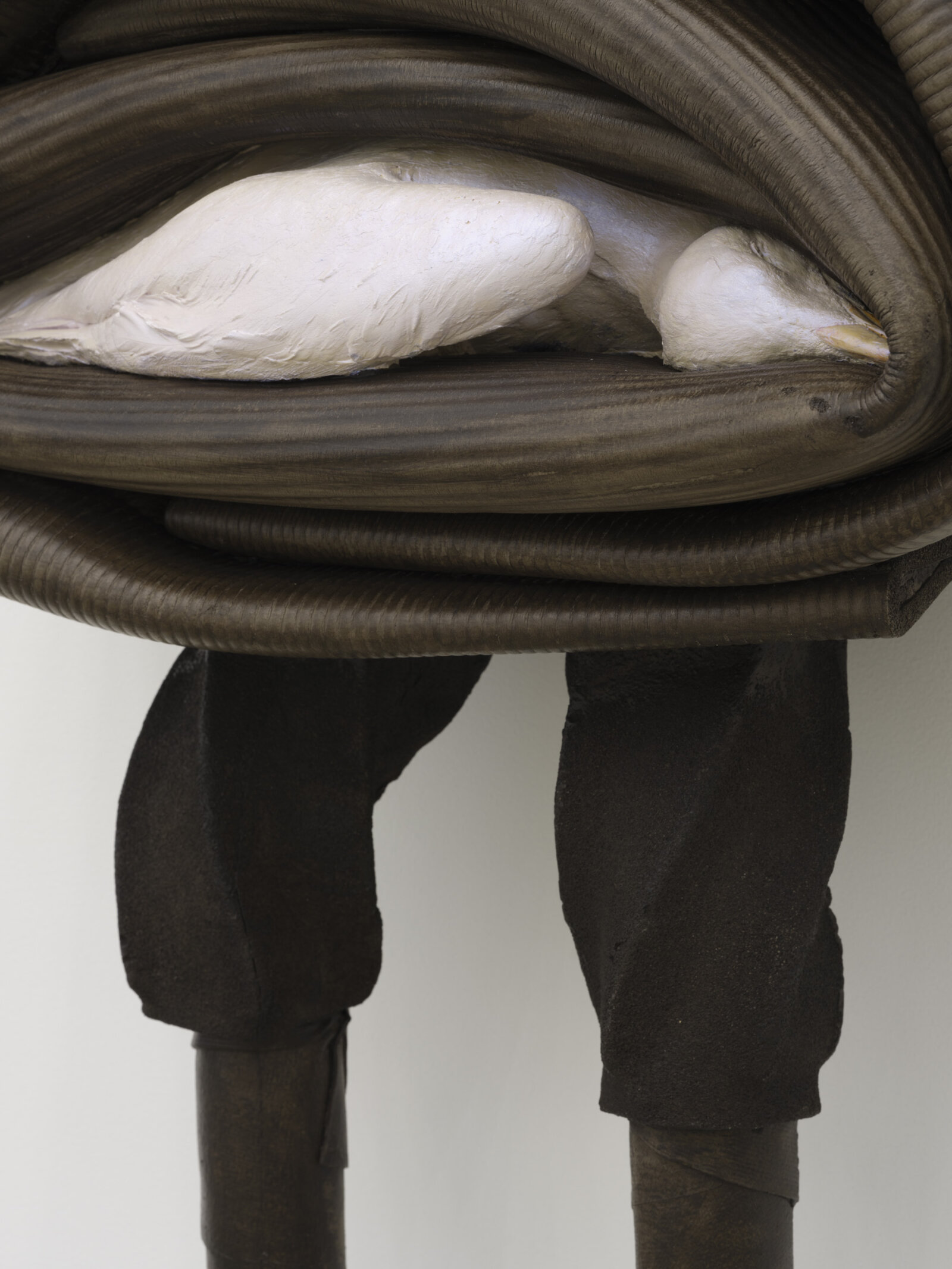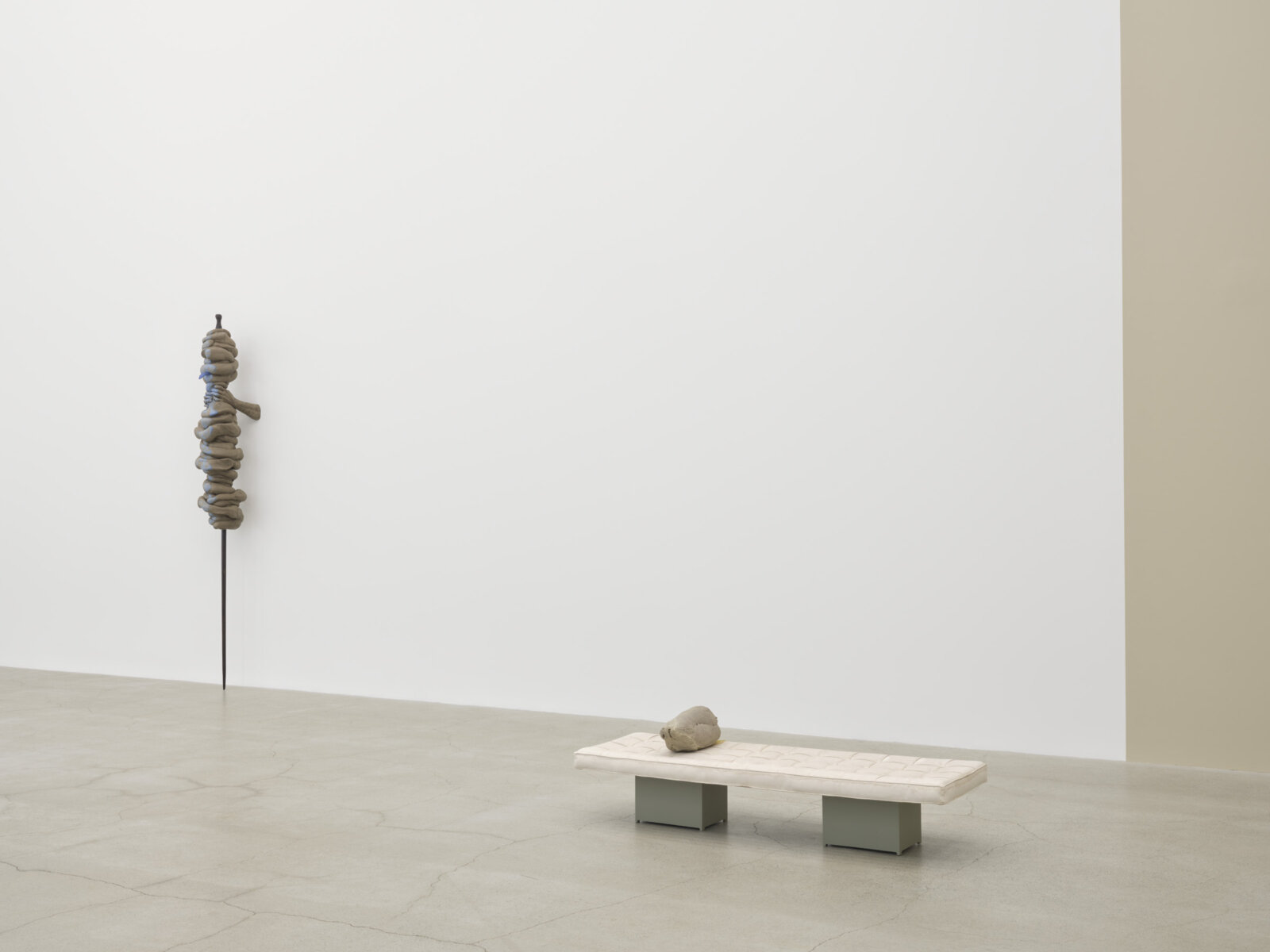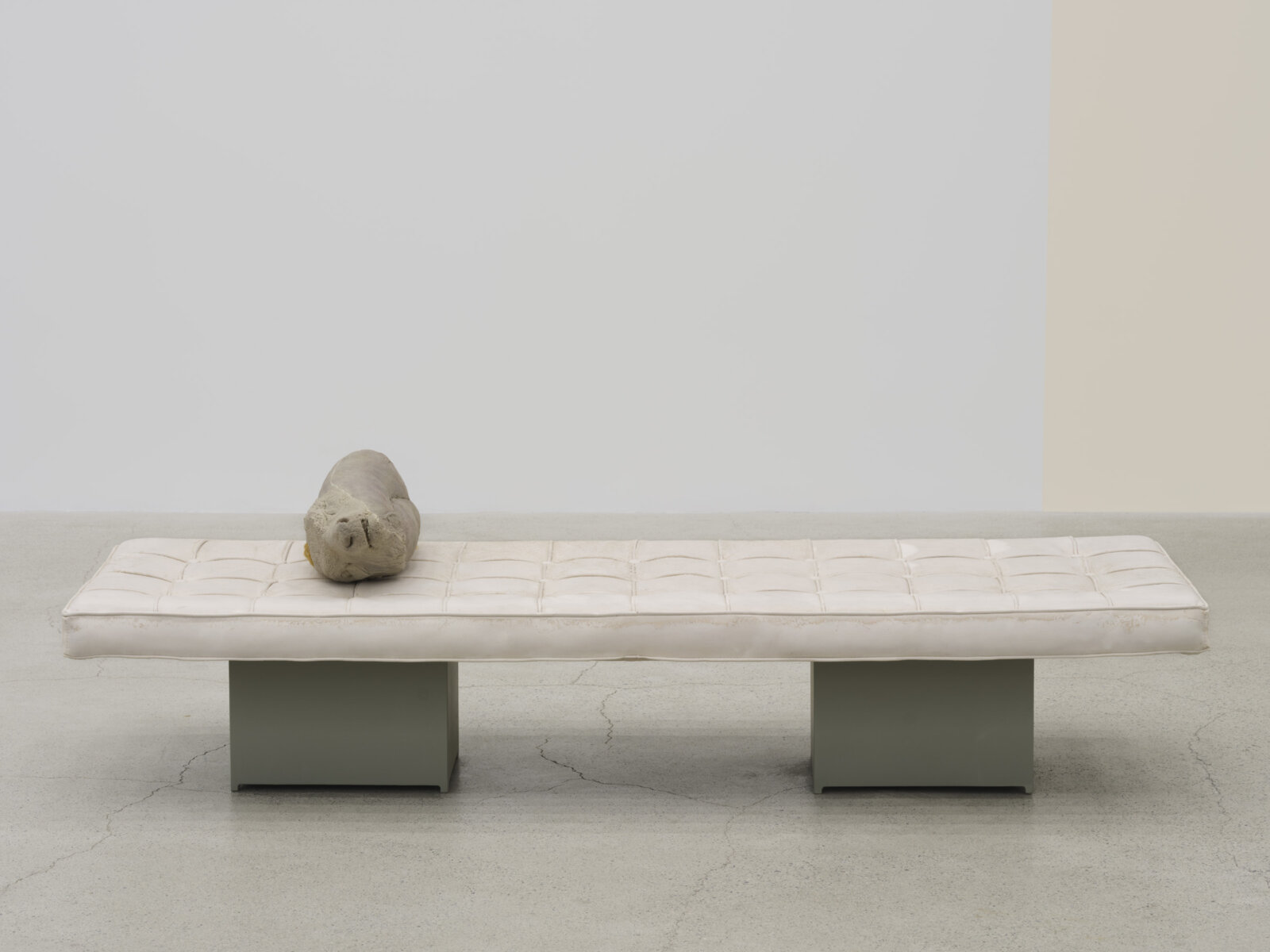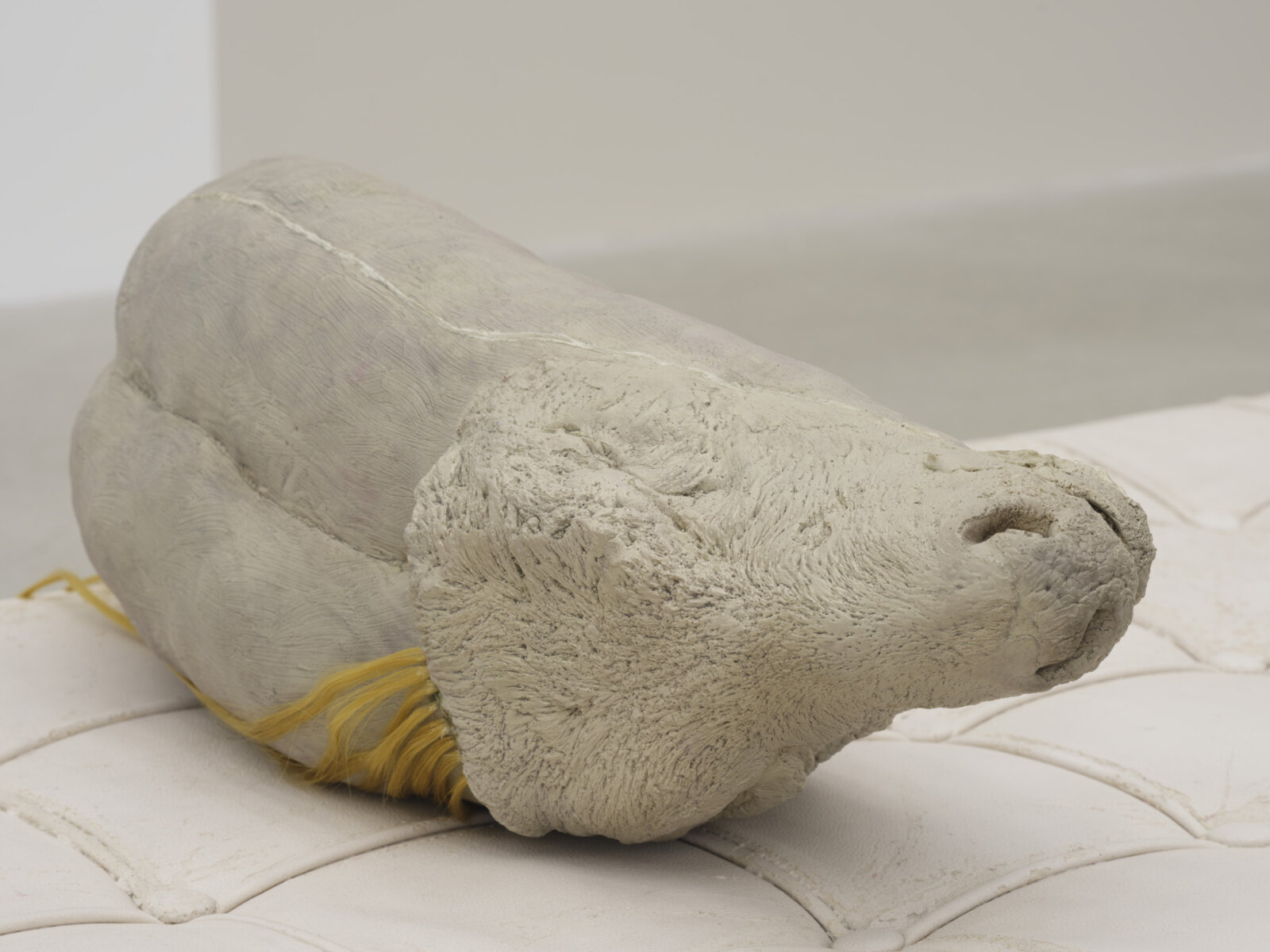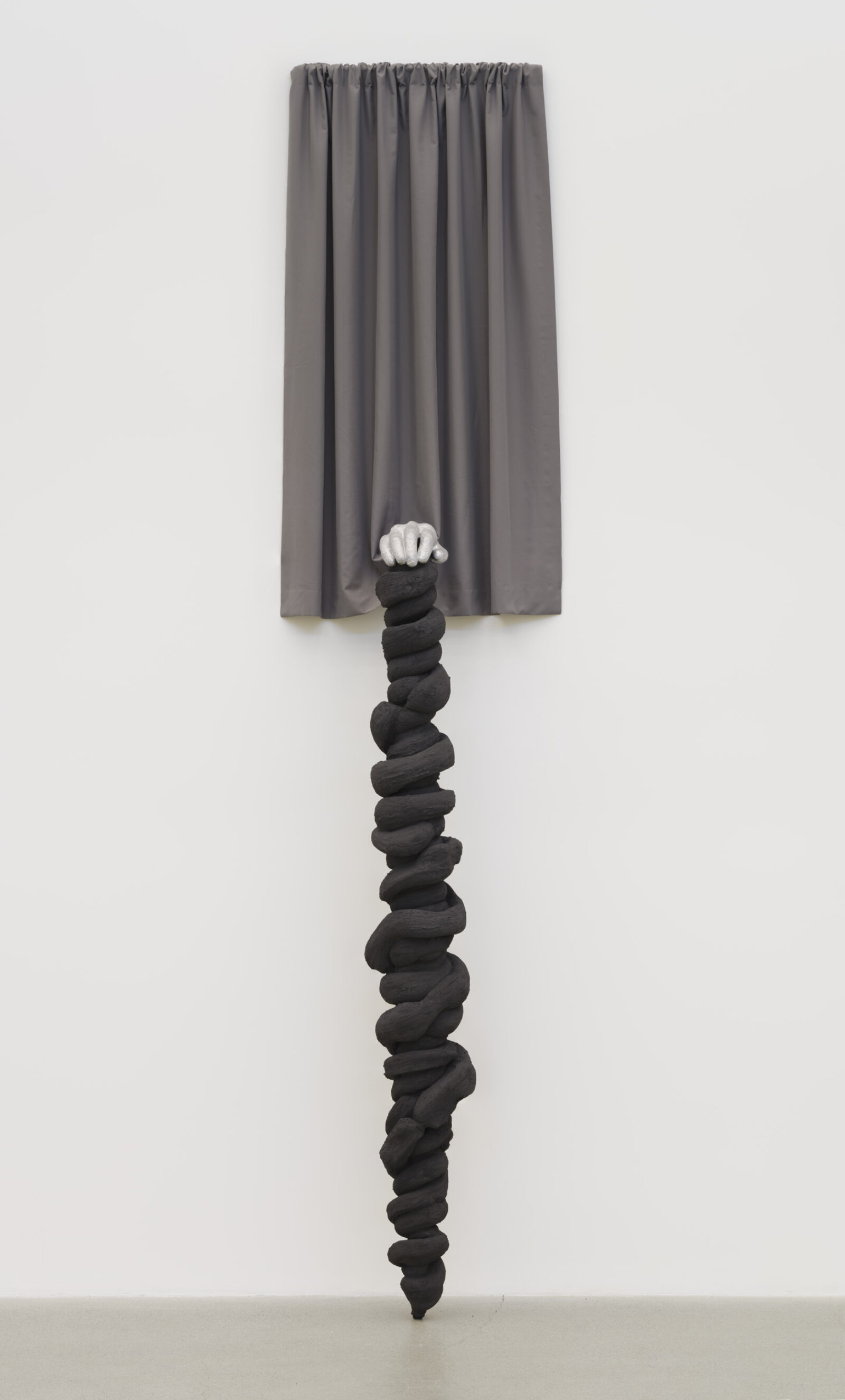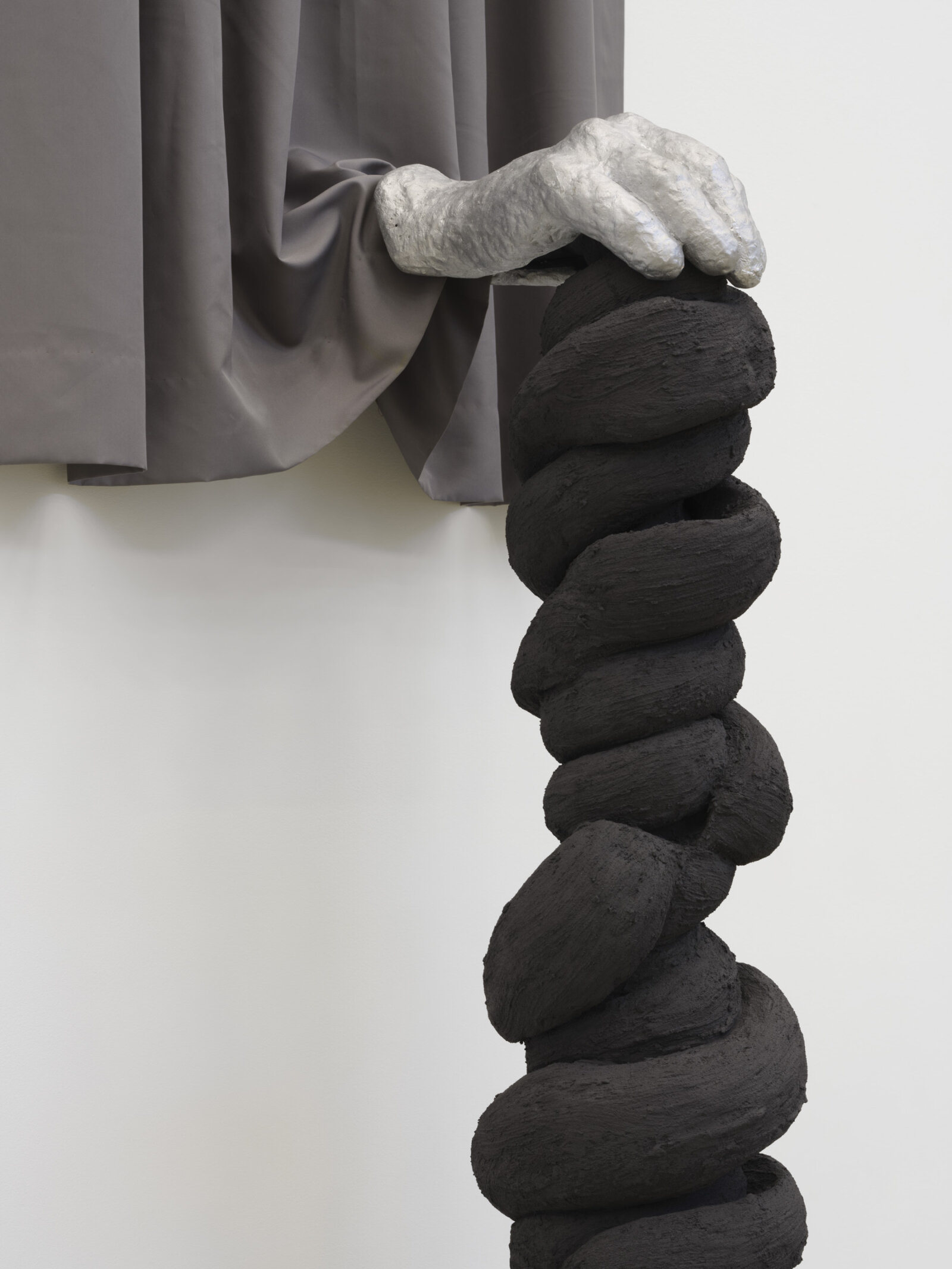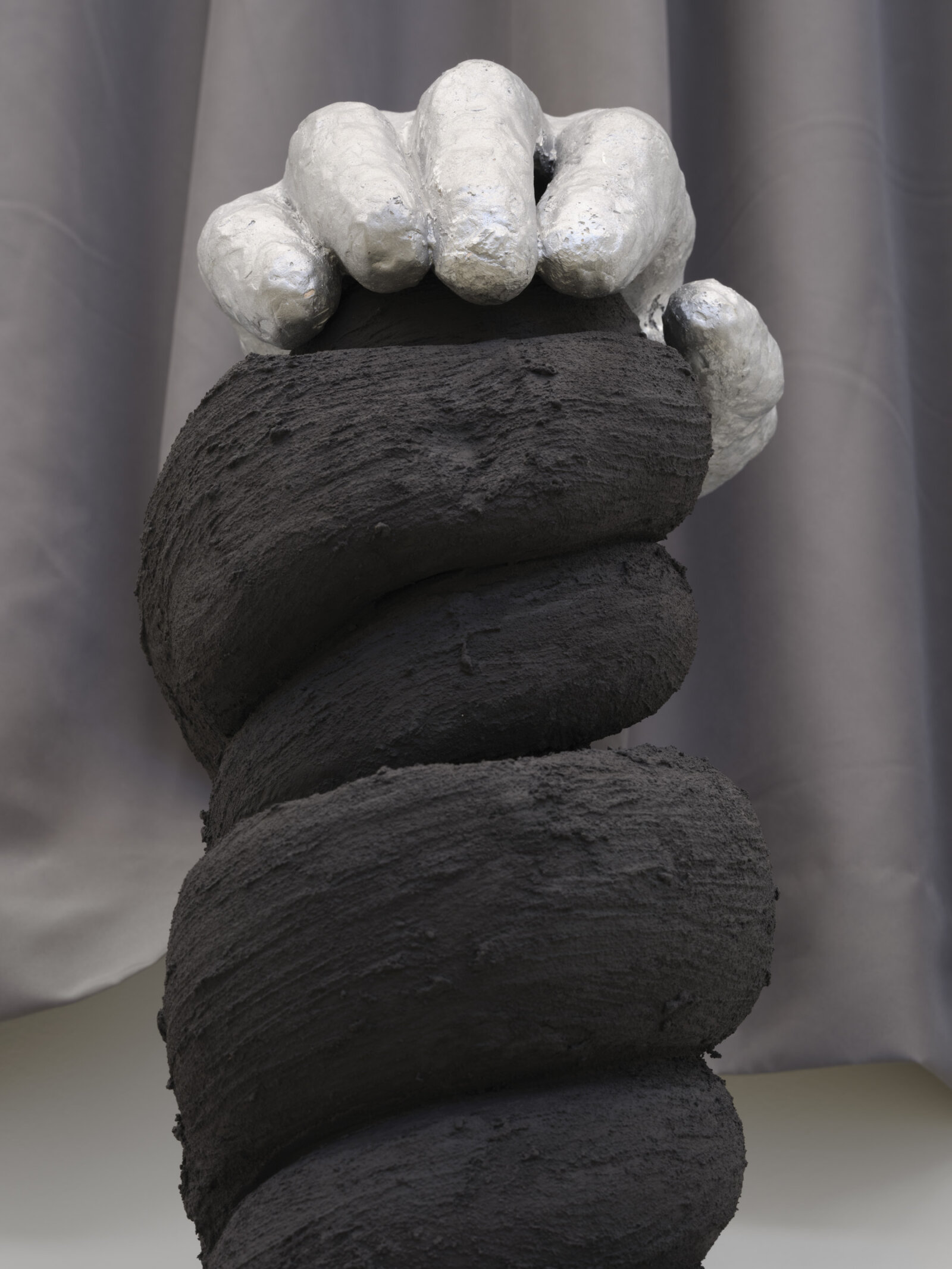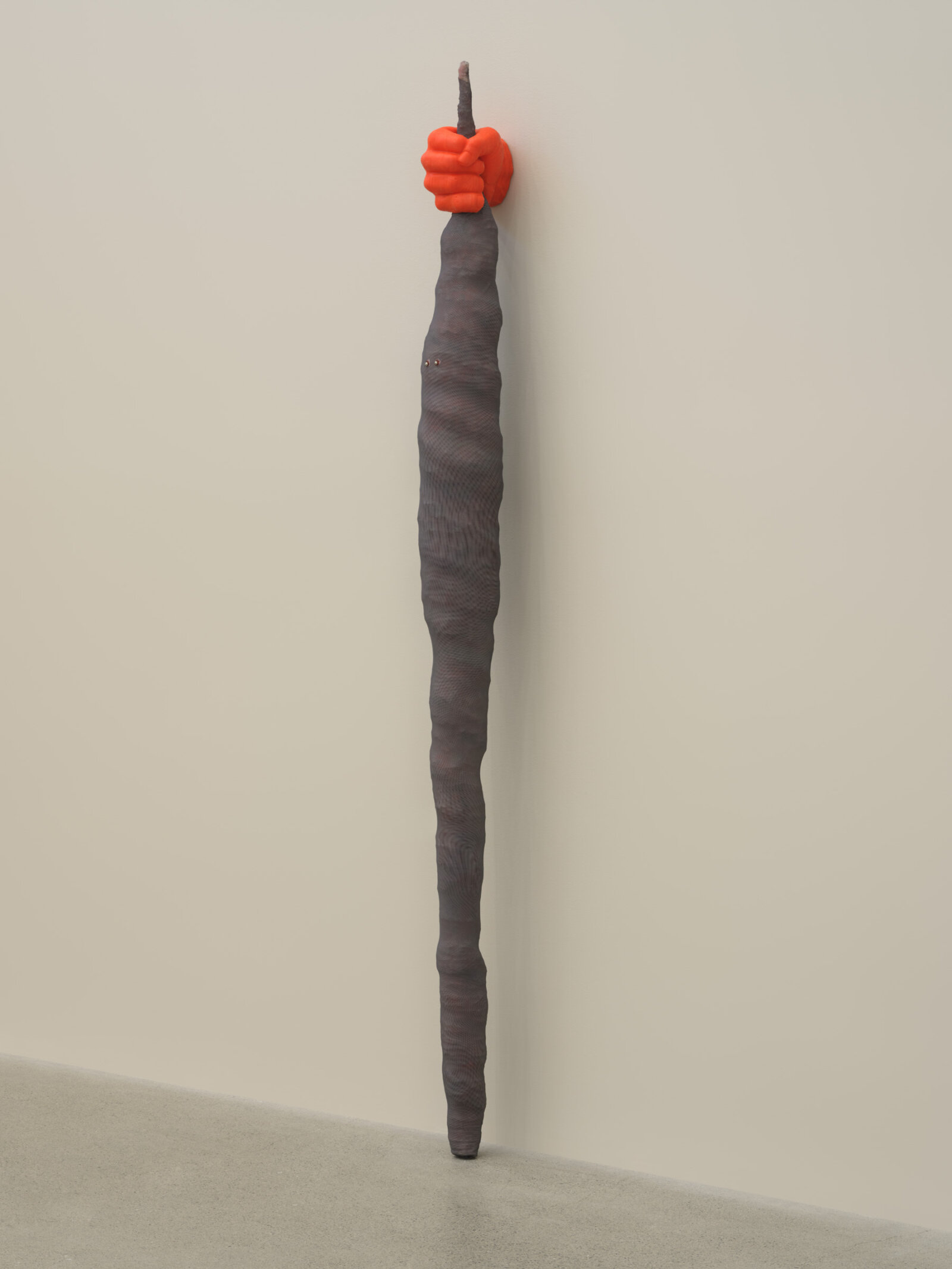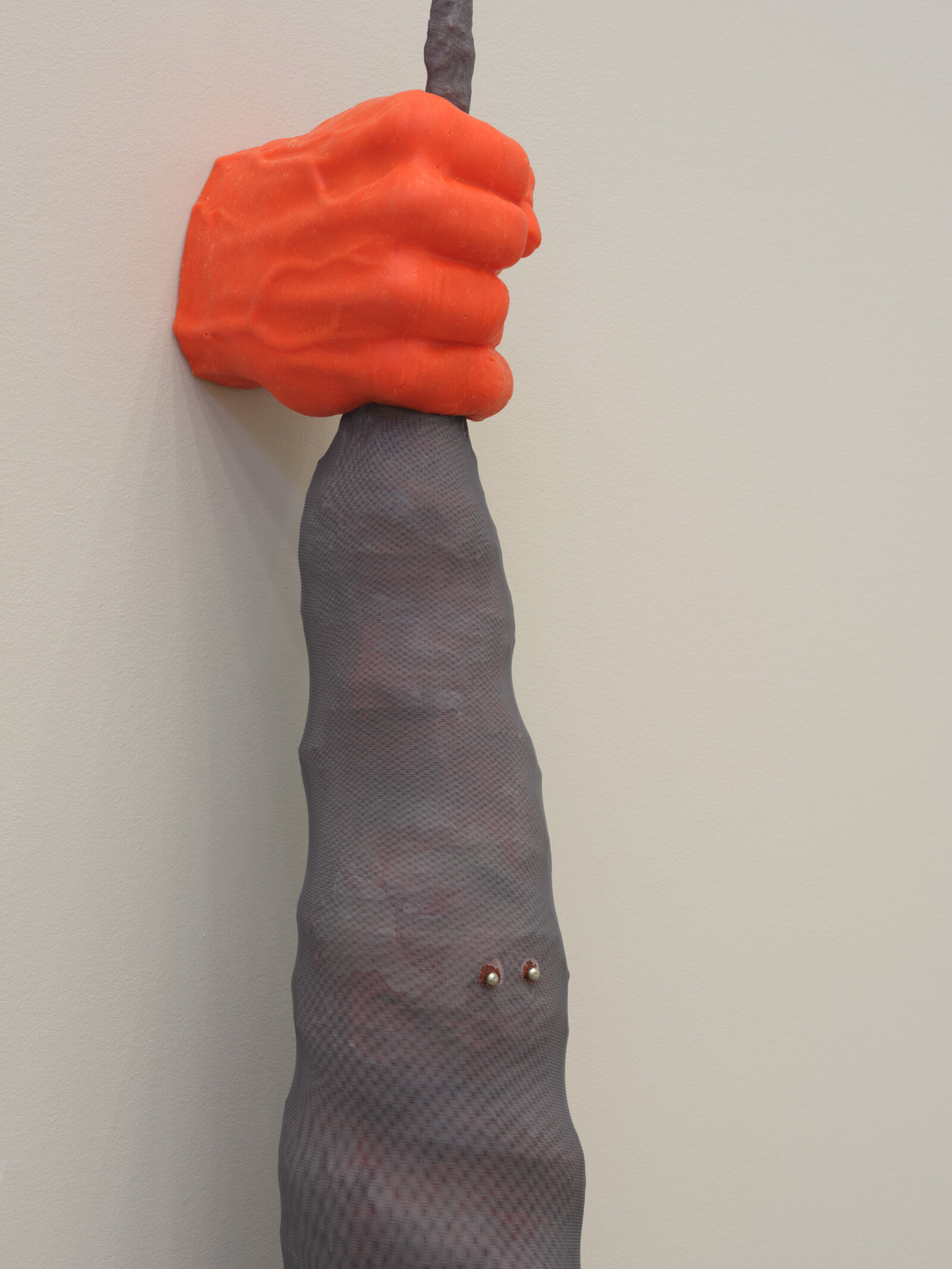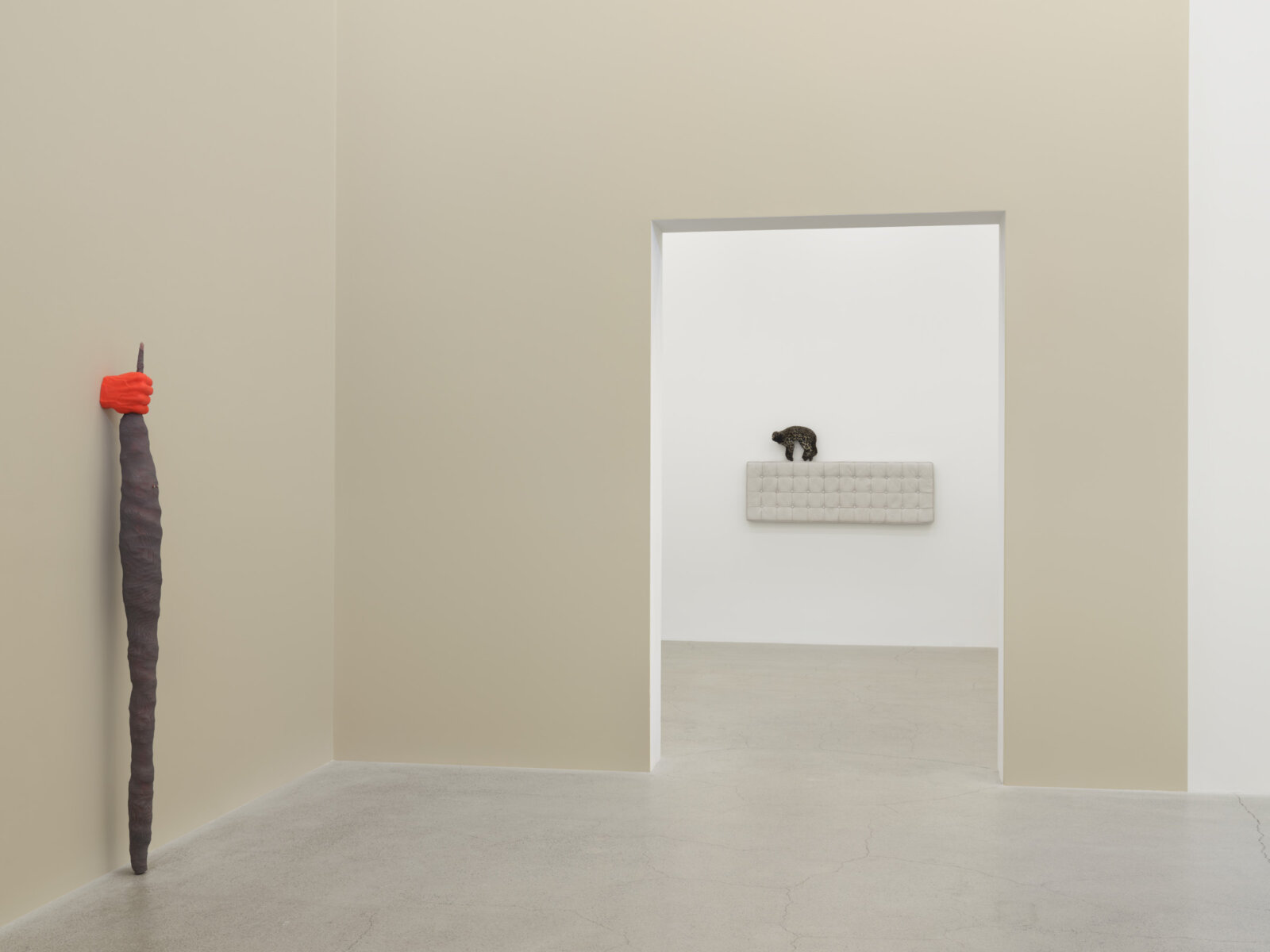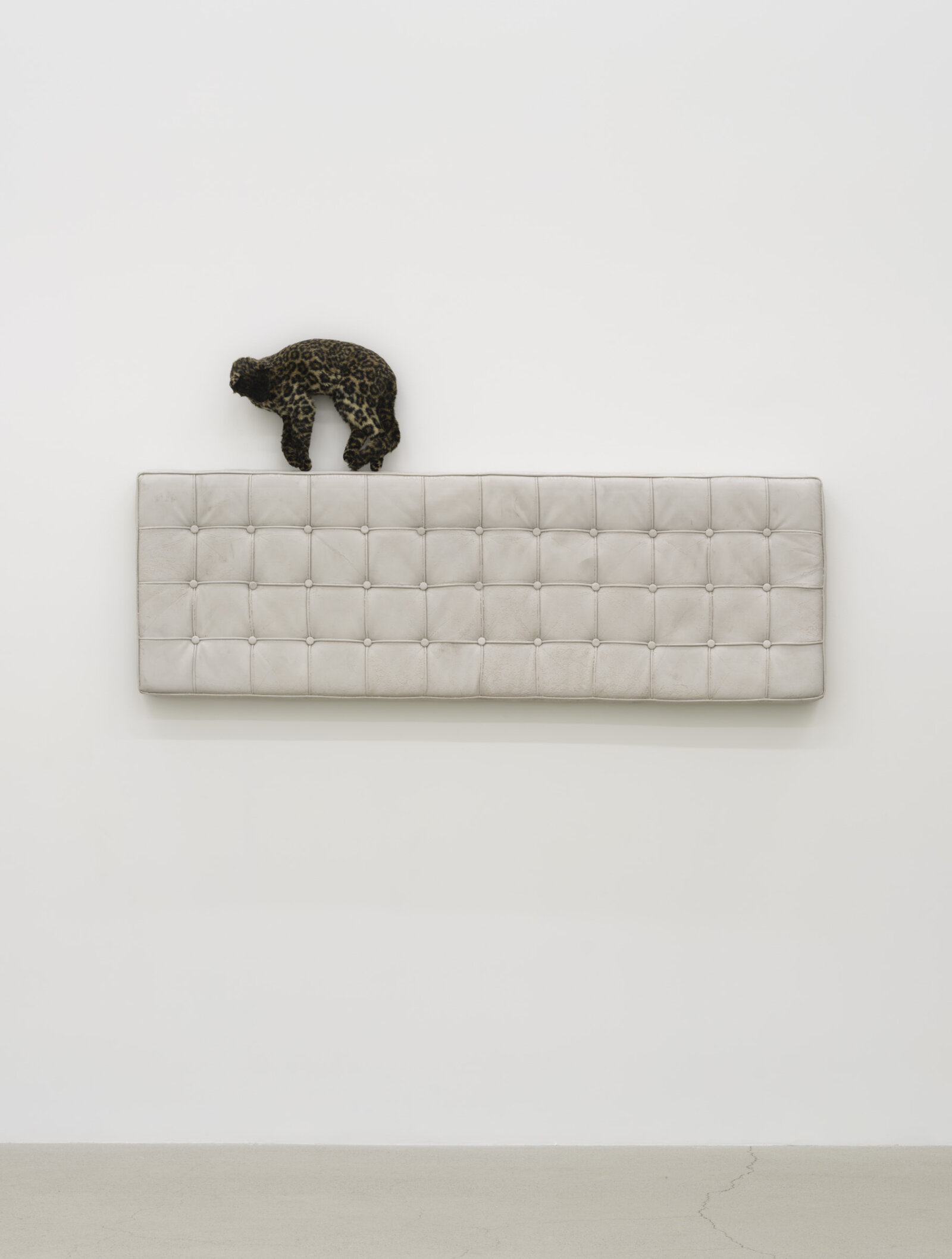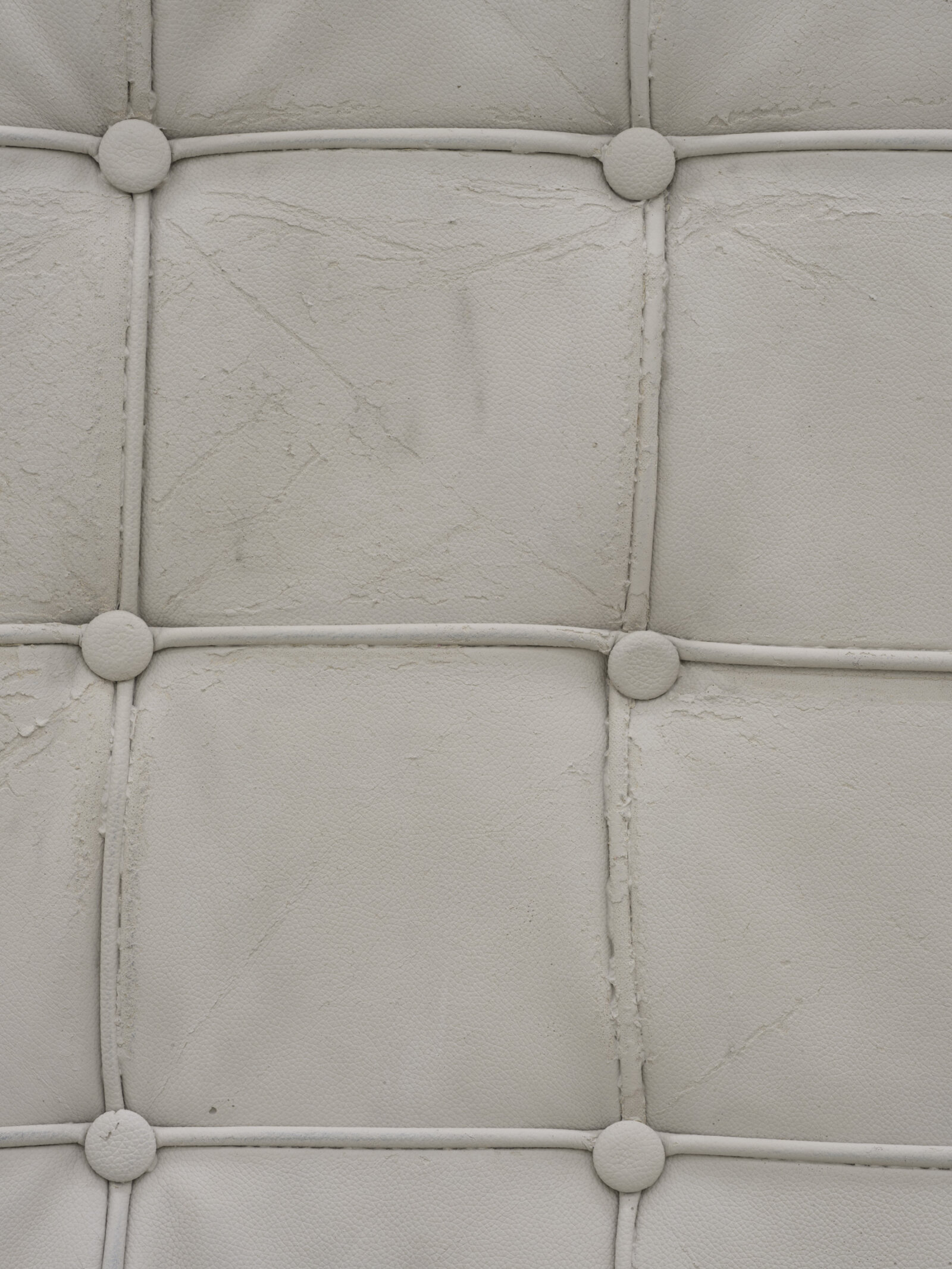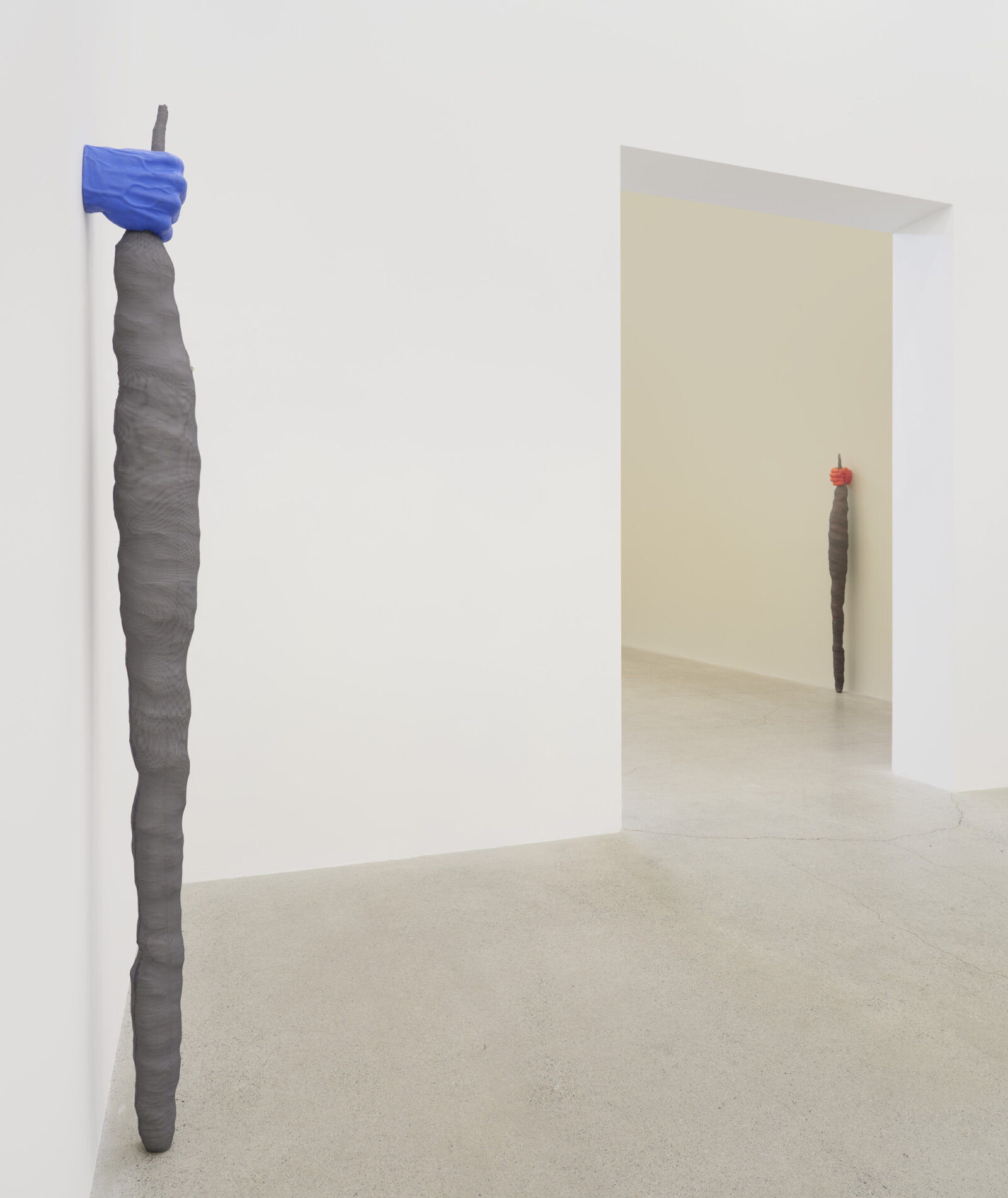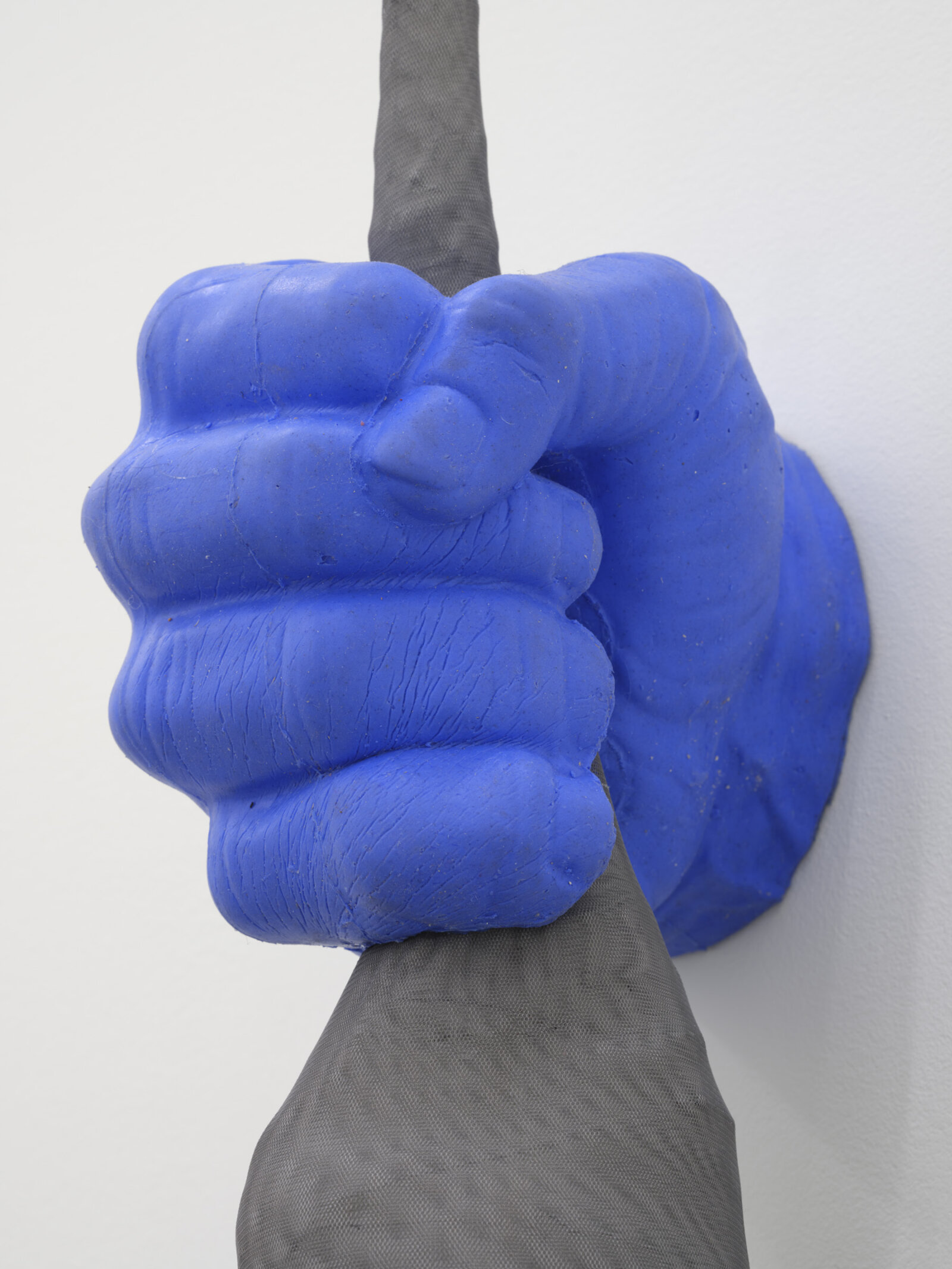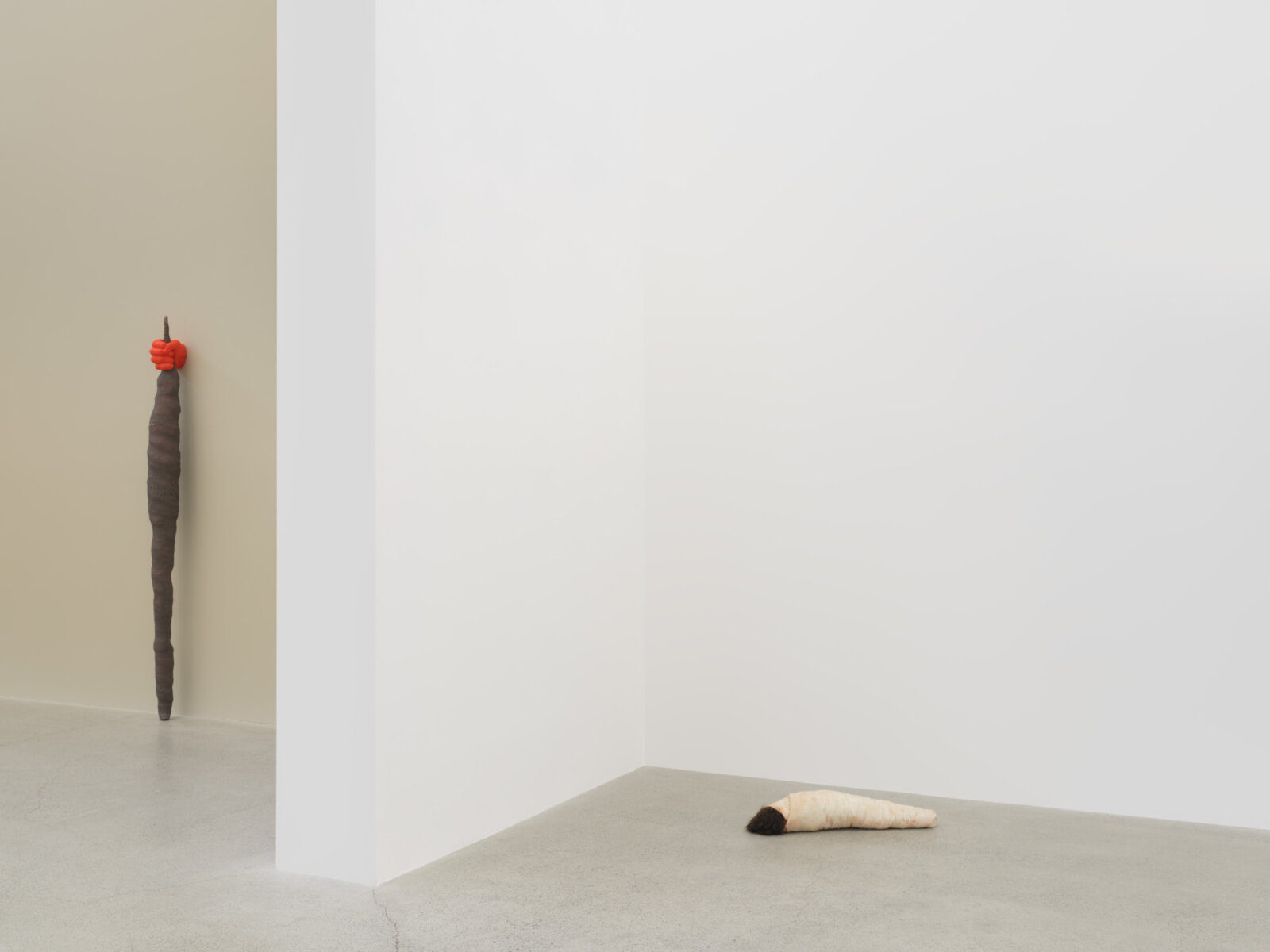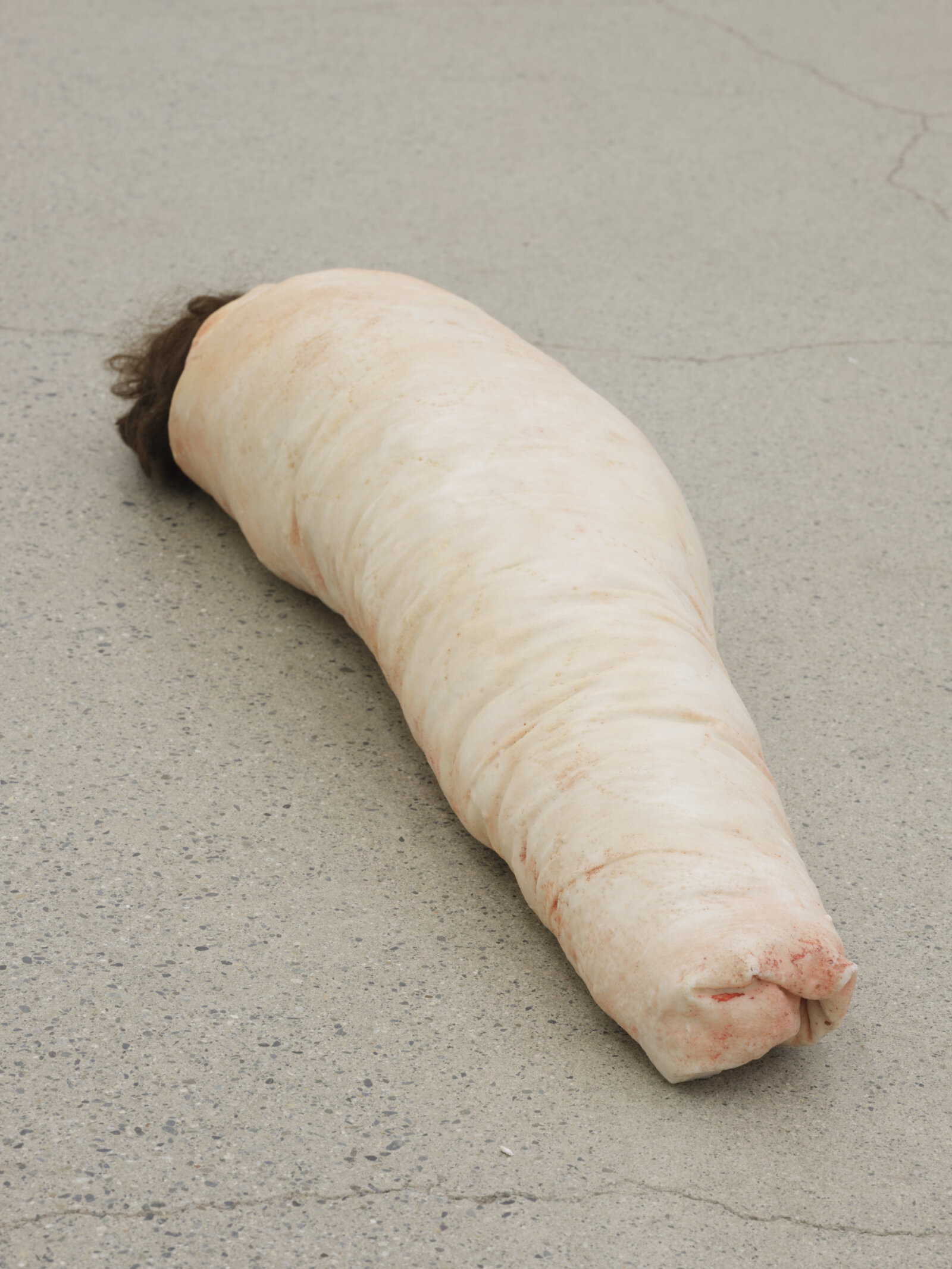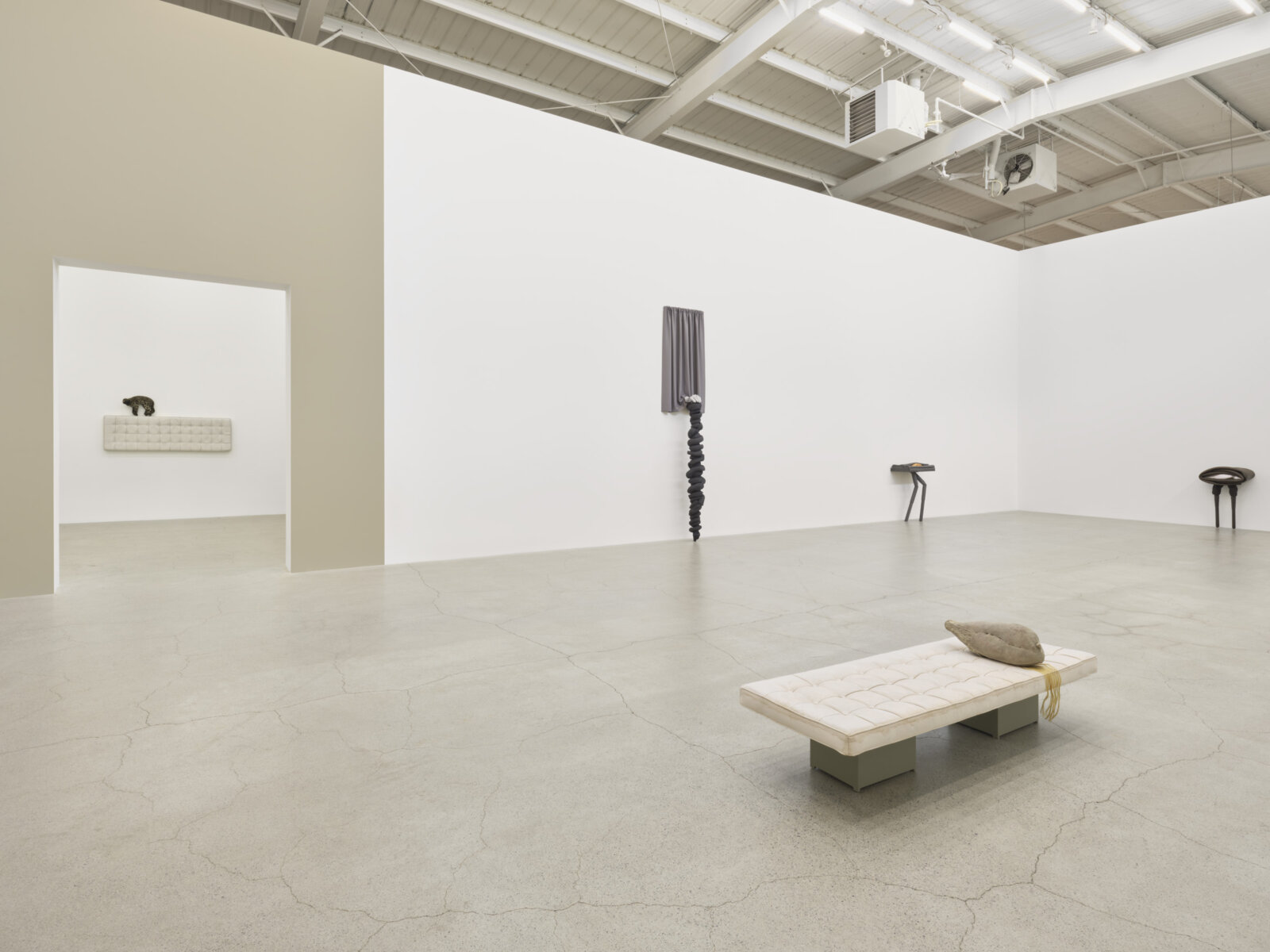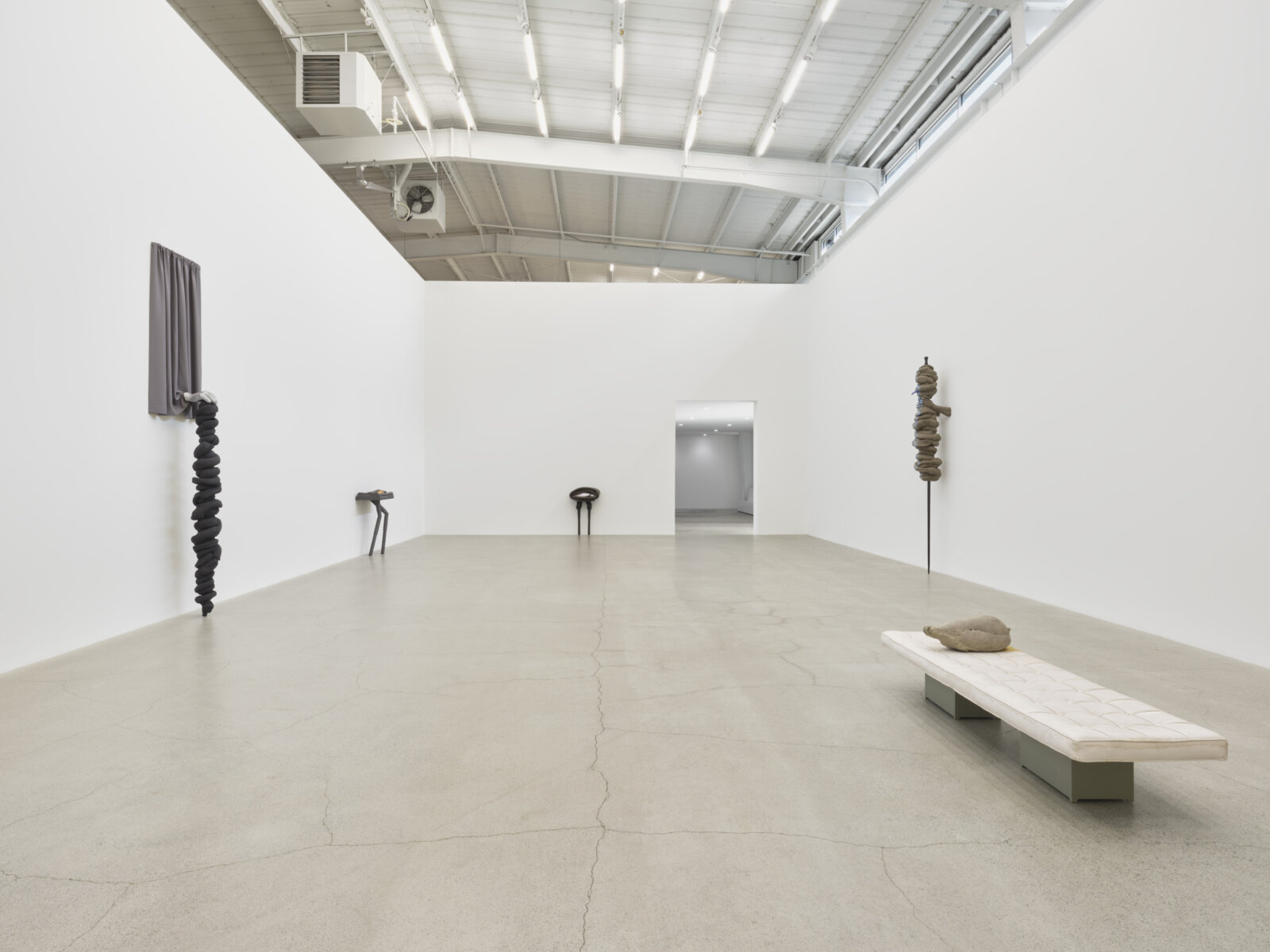Liz Magor – Arrange Your Face, APRIL 26–JUNE 28, 2025
Liz Magor
Arrange Your Face
April 26–June 28, 2025
Catriona Jeffries
The eye of the storm is a region of low pressure found in the centre of swirling cyclones, where calm air is encapsulated on all sides by violent winds and heavy rain. Its name derives from its appearance—a dark, circular depression amidst grey clouds, ringed with jagged lashes—but at such a tremendous size this resemblance can only be grasped from an extreme altitude. From this god’s eye perspective, up above the weather, one eye meets another.
Within clenched fists an exaggerated grip holds a spiralling form. In this gesture, Liz Magor seems to capture the storm: not taming it, but instead arresting something of its speed and viciousness within a solidified physique. Bristling with coiled energy, writhing flanks knot around and through each other. The sculptures manifest as active processes more than static monuments. A close look reveals translucent sheathing, like a straightjacket worn by a moulting insect, while seeping innards protrude from the edges of cast seams. Approaching the sculpture, one realizes they are holding their breath, frozen just like these vortices, for fear of unstopping time and becoming vulnerable to their fury.
If these tightly-wound spirals are indeed cyclones, then these hands appear as an irresolvable difference—the gradient across which pressure, tension, and atmospheric conflicts collide. When the caricaturized hands are cast from the same material as that which they apply force upon, then it follows that these twisted forms are anthropomorphic, too. Perhaps they could be read as a personification of forces that are by their very nature impersonal, like storms visible only from beyond the weather, or present geopolitical tensions made intangible. What exists between the clenched hands is a suggestion of conflict—are they suppressing that which exceeds the human grasp, or are they wrestling the unnameable into a new iteration? The tactility of emotion becoming perceptual memory. Invisible hands guiding the invisible economy. Forecasts as self-fulfilling prophecies.
Fallen over, coiled bundles reveal doll heads emerging hair-first. Do these little cocoons result from the passing storm, swirling winds settling down into swaddling clothes? Or are they more like the gaping mouth of the cyclone, the premonitory form about to swallow their sleeping faces? A similar uncertainty characterizes the stilt-legged nests nearby. Here, supine birds are ensconced within voluminous lips. Frozen in time, we cannot know if they are sleeping or dead. Because human labour is so dependent on manual dexterity, we often struggle to understand the agential powers of animals who lack hands. A creature takes a youth into its mouth, and we immediately fear that a predator has found its prey. But the mother’s mouth, although ringed with fangs, can become a cradle for its young.
Balanced on legs moulded in gypsum cement from found cardboard underscores the bewitching proficiency of Magor’s hand—previously overlooked material becomes animated in its new permanent form, now resilient against the forces of weather. However, their mutually mineralized skin also implies that whatever happenstance brought these shapes together, it has been offset by a slow process of petrification. Magor’s capacity to work her materials into incongruent figures leaves the viewer in a temporal paradox: it is easier to slip into the fantasy of projected narratives than it is to envision the exacting process of the labour behind them. Time seems to move both ways through these beings, forward and back, fast and slow, a latent stasis. The eye of the storm is stillness surrounded by turmoil.
Within each sculptural work, Magor builds tension and posits colliding forces. Every piece contains a lopsided pressure system, precariously balanced in its asymmetry. Any literal depiction or familiarity is torqued with ineffable counterweights, and recurring resemblances to umbilical cords, knotted intestines, and one lolling tongue reveal a suggestion of interiority amongst their largely impenetrable surfaces. Arrange Your Face begs digestion, not simply of its own artistic gestures, but as a prescription for our human world, perilously built on teetering abstractions and invisible causations. As such, the eye of the storm offers a view into the recursive conflicts that seem to close in all around us. Magor’s twist, then, is to occupy a perspective in which we can consider these anxieties anew. Here, the turbulence of transformation is paused midstream, and the disquietude of change becomes a moment for contemplation.
Documentation by Rachel Topham Photography
